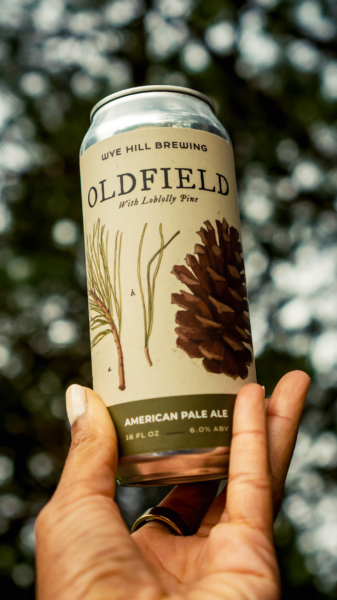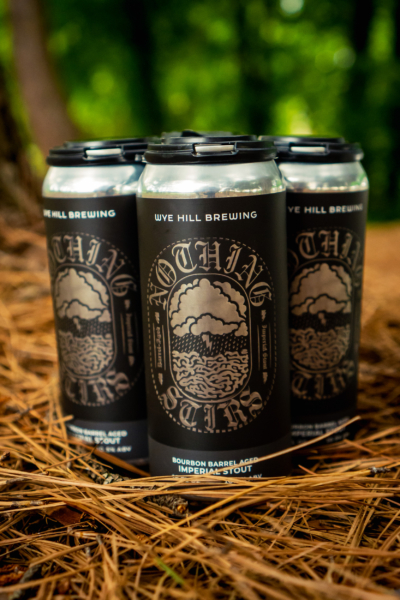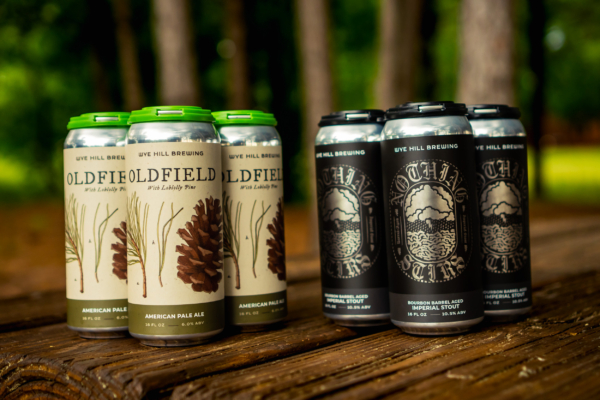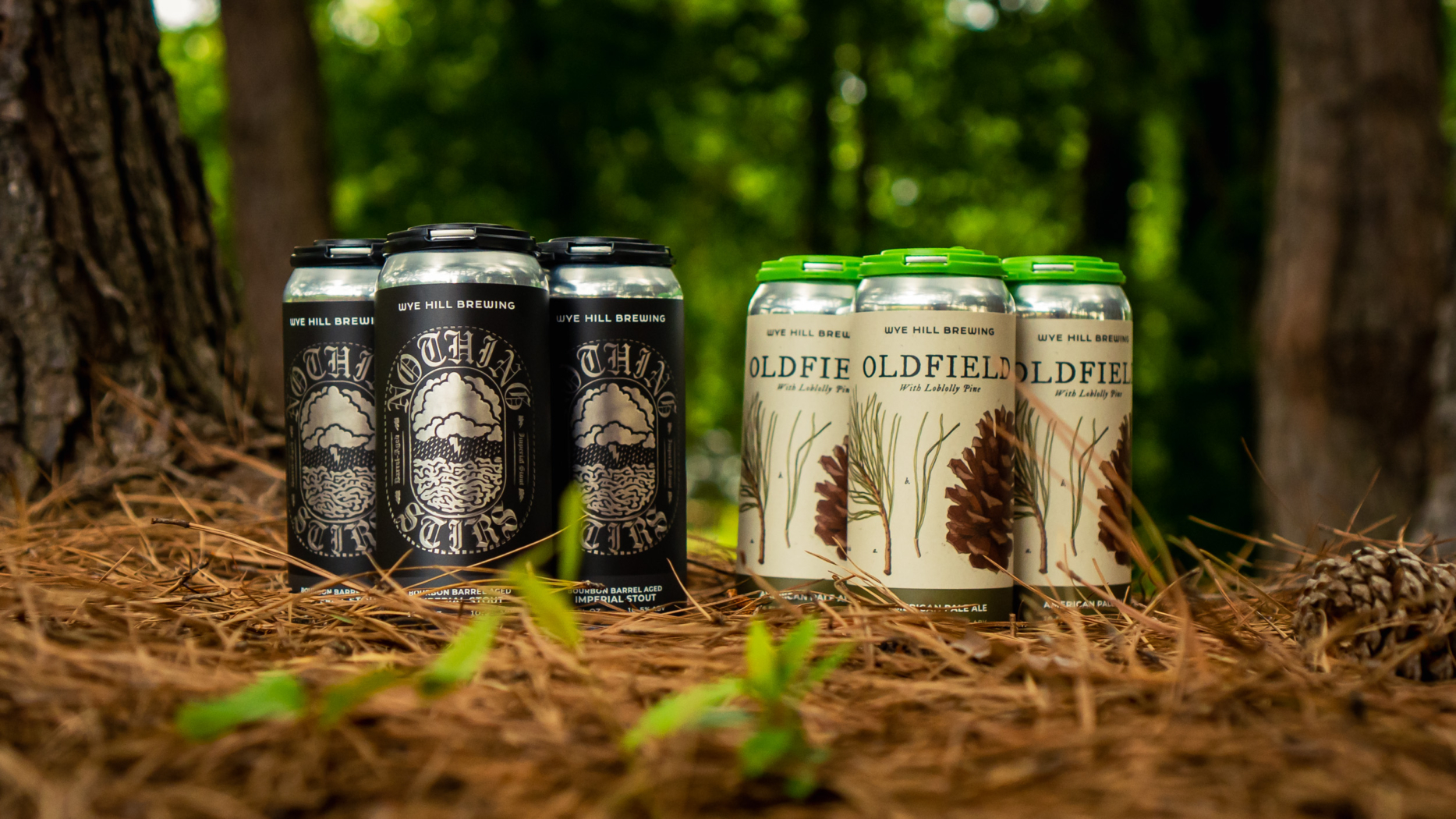A double Re-release of two favorites, in honor of arbor day
For the last three springs at Wye Hill, Director of Brewing Operations– Greg Winget– has brewed Oldfield, our American pale ale. He started home-brewing it about seven years ago, using heaps of loblolly pine every time the season strikes.
Making its second appearance at Wye– and keeping with the tree theme–is our Imperial Stout, Nothing Stirs. Brewed with juniper boughs, it returns after being aged in bourbon barrels for 13 months. At the helm of its creation, our resident dark beer expert, brewer Nick Weber.
“THE PINE TREE SEEMS TO LISTEN”
 Hops are commonly associated with tropical fruit and citrus flavors in beers. They also yield resinous, piney notes. Inspired by that flavor profile, Greg took a very literal approach to the use of loblolly pine in Oldfield. When he moved to North Carolina, he was home-brewing often, and simultaneously learning a lot about foraging and the native environment of the state.
Hops are commonly associated with tropical fruit and citrus flavors in beers. They also yield resinous, piney notes. Inspired by that flavor profile, Greg took a very literal approach to the use of loblolly pine in Oldfield. When he moved to North Carolina, he was home-brewing often, and simultaneously learning a lot about foraging and the native environment of the state.
The loblolly pine is the most common tree in North Carolina (and in the Southeast). It is also called the Oldfield pine. The needles have a strong aroma of orange peel that is unique among pine trees.
“There’s definitely a really strong overlap between citrus and pine flavors like that. But, loblolly is uniquely very citrusy, especially the young needles,” Greg said. “So, what I always try to do is find the youngest shoots of loblolly that I can for this beer, because they’re more aromatically potent.”
This put more emphasis on the citrus and less on the pine resin.
The brewers also used mature branches in the mash (a mix of grains and water, to be heated). By stacking branches on the false bottom of the mash tun, all of the oils from the pines are utilized. Young, fresh needles are put into the whirlpool with the hops for aromatic character. This technique was inspired by that used to create Sahti, a legendary and ancient Finnish farmhouse ale.
A combination of Cascade, Citra and Centennial hops amp up the pineyness even further. Greg said that they increase the amount of loblolly every time they brew Oldfield.
“It’s kind of all about balance between pine/resin character and the citrus character– which at the end of the day is what makes a really good American pale ale.”
He affectionately refers to loblolly pine as the “herald of spring” in nature. When everything has wilted in the winter, it is the first thing to pop back up. Quite fitting, as it seems Oldfield has become the herald of spring at Wye Hill.
“TIME WILL NOT NOTICE”
 Over a year ago, Nick spearheaded the first brew of Nothing Stirs, an Imperial Stout. Half of the batch went on to draft at Wye, and the other half was split between two bourbon barrels (100 gallons total) and aged for 13 months. A Knob Creek and Heaven Hill barrel were used, and a great deal of the flavor comes from the wood.
Over a year ago, Nick spearheaded the first brew of Nothing Stirs, an Imperial Stout. Half of the batch went on to draft at Wye, and the other half was split between two bourbon barrels (100 gallons total) and aged for 13 months. A Knob Creek and Heaven Hill barrel were used, and a great deal of the flavor comes from the wood.
Greg said, “We wanted to make sure we had that oak character to lock into the malt character and juniper element.”
Juniper boughs were used in the brewing process for Nothing Stirs in the same way loblolly was for Oldfield. Once again, utilizing the trusted Sahti method. Ten different kinds of grains were used in the process, as well.
Imperial Stouts are a “prestige brew” in the craft world. They require a lot of knowledge and are quite difficult to make.
“We have to mash twice for a beer like this to hit that high gravity. Then, we boil for generally four to eight hours instead of one hour. There’s a lot that goes into it,” Greg said. “The name of the game with stouts is absolutely layering the sh*t out of it with specialty malt.”
Nothing Stirs’ malt was selected in a way that accentuates the flavor of the juniper boughs. The result is pretty decadent. Chocolate roastiness, caramel flavors and oakiness of the wood harmonize to accomplish the brewers’ ultimate goal when making this (and every) stout– to create something within the style that tastes different than everything before it.


